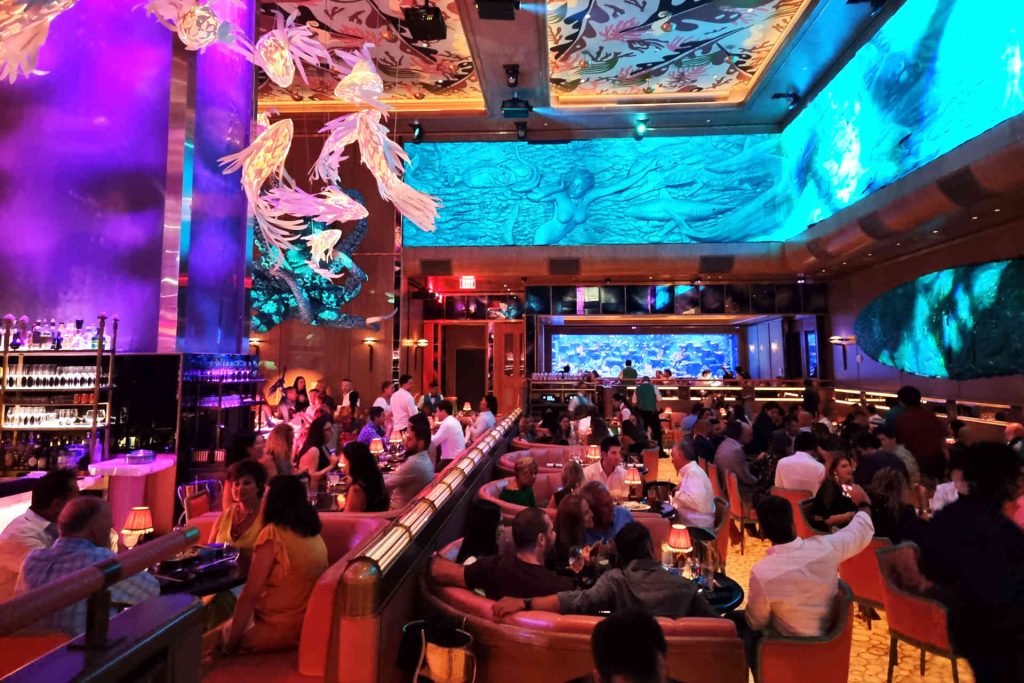| Editorial team
The international food service market is becoming increasingly dynamic with innovative concepts and new players. International and European chains in particular are gaining in importance and expanding worldwide, such as Dishroom and Sexy Fish Miami. One example of this is Pret a Manger, which is also increasingly establishing itself in various countries, as are L’Osteria and Sticks’n’Sushi. Ikea is also breaking new ground with its own restaurant concept, as demonstrated by the opening of an independent restaurant in Hammersmith, London. This illustrates the increasing bundling of chains and the transfer of successful restaurant concepts to new markets.
In addition, gastronomy themes are developing into travel destinations that are spread by the media. In London, for example, it is the seemingly banal yet popular experience of enjoying strawberries with chocolate sauce at Borough Market, triggered by TikTok and Instagram.
Another trend is robot-assisted solutions in the catering industry. The case study by Creator in San Francisco, for example, shows a restaurant that prepares burgers fully automatically - with consistently high precision in terms of freshness and taste. Flying restaurants are no longer a dream of the future either: a start-up in Dubai is testing drone deliveries for luxury customers who receive freshly prepared meals on yachts.
Technological progress is also continuing in the HR sector. Flexible working time models, more part-time options and self-determination are becoming increasingly important. In addition, upskilling through AI is becoming increasingly popular, with training and further education being offered with the help of AI tools. Digitalization is also playing an increasingly important role, and quick-service restaurants are increasingly relying on kiosk terminals and ordering by QR code. Trendsetters are increasingly focusing on dynamic pricing. Restaurants like Next in Chicago are experimenting with flexible pricing models where prices change according to demand, similar to the hotel industry.

Imola is much more than just a race track: the city combines top-class cuisine, cultural monuments, and traditional producers to create an experience that delights connoisseurs, Italy fans, and curious travelers alike. From 2-star gastronomy at Ristorante San Domenico to creative pizza experiences and slow food osterie to historic libraries, palazzi, and award-winning wineries: this guide shows you the best places for cuisine, culture, and shopping—authentic, high-quality, and with real added value for your next visit to Imola.
The two-star Berlin restaurant Horváth returns to Vienna in early 2026 with an exclusive pop-up, presenting an uncompromising new menu based on “emancipated vegetable cuisine.” For two weeks, Sebastian and Jeannine Frank’s team will take over the Herzig restaurant and serve a 7-course menu that shows how innovative, precise, and luxurious vegetables can be today. A culinary highlight for foodies, fine dining fans, and anyone who doesn’t want to miss Austria’s most exciting pop-up experience of 2026.
This time, Sebastian Frank is taking an even more uncompromising approach, with a new menu and a clear message: vegetables can be luxurious – even without caviar.
With the opening of its new distillery in Mosbach, Aromahopping is sending a strong signal about the future of artisanal spirits. Between extraordinary gin compositions, creative tastings, and a high-caliber supporting program, it became clear what makes the Odenwald brand so special: attention to detail, curiosity about new flavors, and a passion for honest craftsmanship.


The international food service market is becoming increasingly dynamic with innovative concepts and new players. International and European chains in particular are gaining in importance and expanding worldwide, such as Dishroom and Sexy Fish Miami. One example of this is Pret a Manger, which is also increasingly establishing itself in various countries, as are L’Osteria and Sticks’n’Sushi. Ikea is also breaking new ground with its own restaurant concept, as demonstrated by the opening of an independent restaurant in Hammersmith, London. This illustrates the increasing bundling of chains and the transfer of successful restaurant concepts to new markets.